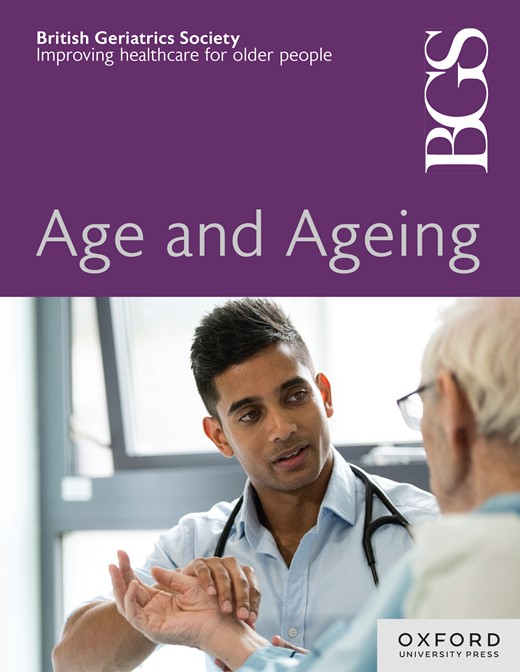Initiation of anti-osteoporosis medication following hip fracture in older adults: a systematic review and thematic synthesis of qualitative studies from patient and healthcare professional perspectives
IF 7.1
2区 医学
Q1 GERIATRICS & GERONTOLOGY
引用次数: 0
Abstract
Background Pharmacological osteoporosis treatment is recommended for secondary fracture prevention in older patients following a hip fracture. However, not all eligible patients receive anti-osteoporosis medication (AOMs). Understanding the decision-making process regarding treatment initiation at patient level may help explain low prescription rates and offer novel solutions beyond organisational initiatives. Objective This systematic review aimed to synthesise data from qualitative studies on the initiation of AOMs after a hip fracture in old age, to (i) explore the experiences and preferences of patients and healthcare professionals in the decision-making process, and (ii) clarify if this explains low prescription rates. Methods A systematic search in seven medical databases identified qualitative publications on the initiation of AOMs in older hip fracture patients. Thematic synthesis was applied, with the CASP checklist and GRADE-CERQual approach enhancing review’s rigour. Results Twenty studies were included, revealing two main themes with eight subthemes. The ‘addressing’ step illustrates that addressing osteoporosis treatment is not self-evident and depends on specialty-specific responsibilities, knowledge and capability, commitment to identifying eligible patients, and the perceived importance and feasibility of treatment. The ‘discussing’ step highlights the need for patient education, patient perceptiveness, making sense, a patient-centred approach, and patient choice, indicating that discussing treatment is not a clear-cut path. Conclusions AOM initiation after hip fracture in old age is shaped by a two-step decision-making process of (i) addressing treatment and (ii) discussing treatment—which may partly explain low prescription rates. Beyond organisational strategies, promoting education and awareness may strengthen professional initiative and patient engagement.老年人髋部骨折后开始抗骨质疏松药物治疗:从患者和医疗保健专业角度对定性研究进行系统回顾和专题综合
背景:骨质疏松药物治疗被推荐用于髋部骨折后老年患者的二次骨折预防。然而,并非所有符合条件的患者都接受抗骨质疏松药物治疗。在患者层面理解关于治疗开始的决策过程可能有助于解释低处方率,并提供超越组织倡议的新解决方案。本系统综述旨在综合老年髋部骨折后启动AOMs的定性研究数据,以(i)探索患者和医疗保健专业人员在决策过程中的经验和偏好,以及(ii)澄清这是否解释了低处方率。方法系统检索7个医学数据库,确定老年髋部骨折患者发生AOMs的定性文献。采用专题综合,CASP核对表和GRADE-CERQual方法加强审查的严谨性。结果纳入20项研究,揭示了2个主要主题和8个次要主题。“解决”步骤说明,解决骨质疏松症的治疗并不是不言自明的,它取决于特定专业的责任、知识和能力、确定合格患者的承诺,以及治疗的重要性和可行性。“讨论”这一步强调了对患者教育、患者感知、理解、以患者为中心的方法和患者选择的必要性,表明讨论治疗并不是一条明确的道路。结论老年髋部骨折后AOM的发生是由两步决策过程决定的,即(i)确定治疗方案和(ii)讨论治疗方案,这可能部分解释了低处方率的原因。除了组织战略之外,促进教育和意识可以加强专业主动性和患者参与。
本文章由计算机程序翻译,如有差异,请以英文原文为准。
求助全文
约1分钟内获得全文
求助全文
来源期刊

Age and ageing
医学-老年医学
CiteScore
9.20
自引率
6.00%
发文量
796
审稿时长
4-8 weeks
期刊介绍:
Age and Ageing is an international journal publishing refereed original articles and commissioned reviews on geriatric medicine and gerontology. Its range includes research on ageing and clinical, epidemiological, and psychological aspects of later life.
 求助内容:
求助内容: 应助结果提醒方式:
应助结果提醒方式:


